Kevin Ponto’s Protean Guise, tucked into the back of the Ruth Davis Design Gallery at Nancy Nicholas Hall, sits in darkness — a stark contrast to the bright lights and colors of Marianne Fairbanks’s Impractical Weaving Suggestions exhibit that inhabits the rest of the gallery. And yet, it is light that immediately draws the eye to the first of two pieces in Ponto’s exhibit. On the back wall, three connected tangles of wire pulse with light that darts from one place to another, eventually lighting up the entire system.
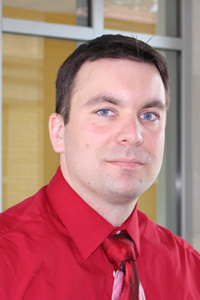
Protean Guise is an experiment in visualizing interconnectedness and propagation, and the tangled wire display is a clean and simple representation of these concepts. Several photoresistors contained inside small white balls trigger the system once they are exposed to adequate light. These photoresistors cause wires that run from one node to another to light up, and they in turn trigger still more photoresistors, propagating illumination throughout the entire wall. Guests are welcome to use their phone lights or a provided flashlight to interact with the display.
Kevin Ponto, an assistant professor in the School of Human Ecology at UW-Madison and member of the Living Environments Laboratory at the Wisconsin Institute for Discovery, spends most of his time and energy on virtual reality research, attempting to redefine human interaction with virtual worlds. Protean Guise is not squarely in Ponto’s usual arena, but has been a fun exploration into new kinds of visualization. Viewers have the chance to see something that usually happens at the speed of light — think fiber optic cables — slowed down to perceptible speeds.
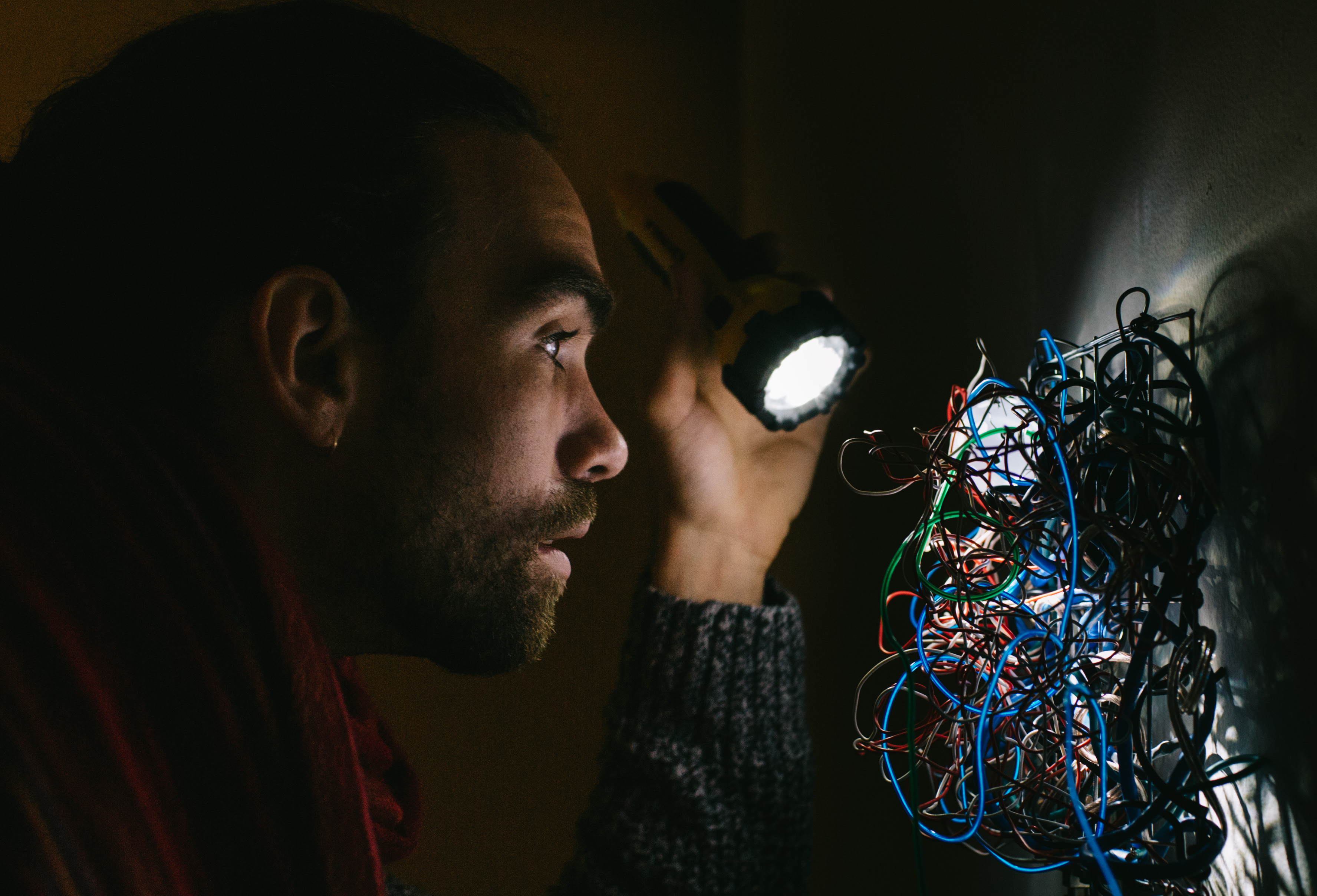
The exhibit was originally meant to be housed in total darkness, allowing careful control of light triggers. However, Ponto welcomes the ambient light from Fairbanks’s neighboring exhibit, which is sometimes bright enough to trigger the sensors and create unpredictable patterns of colors and light. In a way, it is another demonstration of interconnectedness; Fairbanks’s Impractical Weaving shares themes of connection with Protean Guise, and light connects the exhibits physically.
The second piece in Ponto’s exhibit was extended from an idea born during his PhD studies at UC San Diego. As a student, Ponto was interested in visualizing how ideas from the seemingly limitless information available on wikipedia.org would cluster together when subjected to a simulation.
The exhibit’s code is written in the cross-platform video game engine Unity, also used by WID’s Games Learning Society group, and allows users to input any term of their choosing using a keyboard, then watch related terms appear and connect with each other on the wall of the gallery. A new Wikipedia entry materializes about every half second, and at regular intervals the central focus of the simulation is shifted. Once the simulation is initiated, there is no need for any further human guidance; ideas propagate and wander down unexpected and sometimes strange paths. Ponto says, “I position [the piece] somewhere between art and scientific visualization.”
“I position [the piece] somewhere between art and scientific visualization.”
— Kevin Ponto
For Ponto, part of the message is creating curiosity through visualizing connections. He says, “sometimes you’ll see links that really do make you think about things and go and explore more. It causes you to ask this question – how are these things related? – that you would never have thought about.” Other times, the simulation will bring you to places that are either too specific or too broad for meaningful connections; “sometimes you’ll wander into the weeds,” says Ponto.
The Wikipedia visualizer has potential to be more interactive, allowing users to prune and slice connective trees, refocus intentionally, or adjust other parameters. And yet there is some delight in letting the simulation meander where it will, taking you for a ride through surprising ideas and associations. Much like a long conversation, new topics are introduced and followed in unpredictable ways.
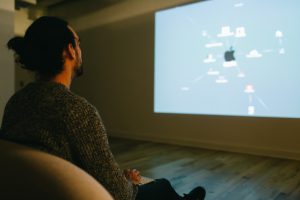
And each user’s experience is different. According to Ponto, “the same search will give you something different every time; you’ll wander someplace else.” Ponto is keeping track of those experiences: “at the end of this I’m curious to see what happened, to see how we got from this to this to this, and make a roadmap out of it.”
As with the tangled wire display, pace is an important feature on the Wikipedia wall. New terms and links appear frequently enough for the web to be constantly evolving, but slowly enough for the viewer to be able to follow the progression and trace the connections.
The visualization does have limits. The lines drawn between terms represent connections in an imprecise sense, but to really know how subjects are connected, further investigation is necessary. And yet, an informative picture can still be painted with only the simple lines. Entering “Wisconsin Institute for Discovery,” for example, and watching the web expand and evolve can give the viewer a good idea of how the institute is situated on campus and its history and residents. Starting the search over again reveals different connections and perspectives.
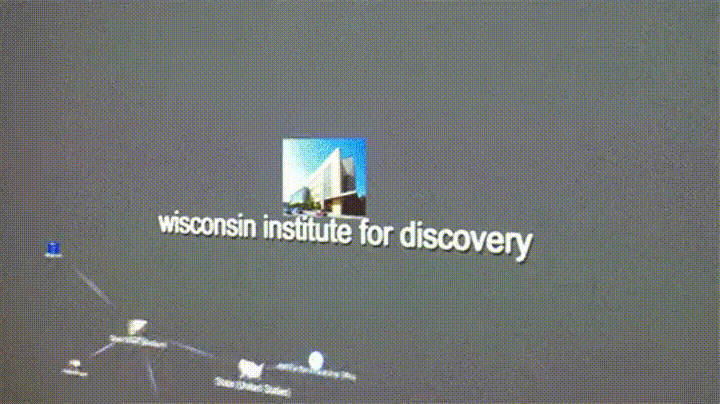
This sped-up recording shows the results of a single search term over about one minute.
Ponto’s Protean Guise and Fairbanks’s Impractical Weaving Suggestions are open to the public every Tuesday through Friday, 10:00 to 4:00 and Sundays noon until 4:00 in the Ruth Davis Design Gallery at Nancy Nicholas Hall January 22 through February 21, 2016.
— Nolan Lendved

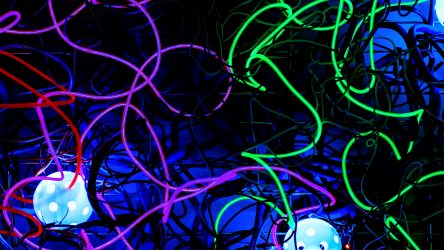
You must be logged in to post a comment.